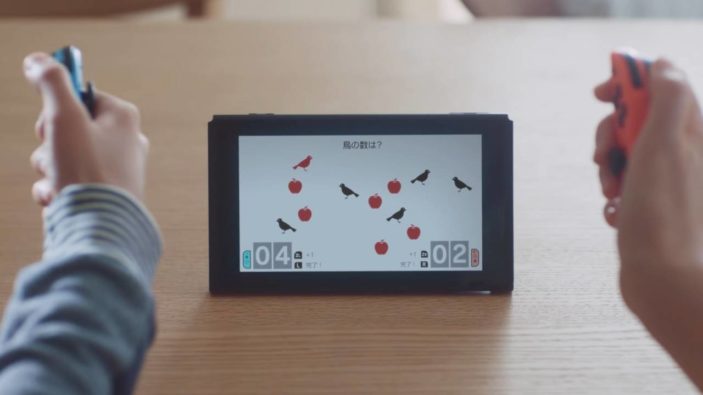
Nintendo has leaned heavily on nostalgia to make the Switch one of their most successful systems to date. There’s nothing wrong with that, and for the most part it has worked remarkably well. Ports and remakes have been leading the pack, tiding us over while new IP is few and far between. Yes, it can get annoying, but Switch’s hybrid nature has made up for that. I’m not sure it can make up for Dr Kawashima’s Brain Training.
Fuelling the DS over a decade ago, this title was a pioneer in gamification long before there was a Wii Sports or Wii Fit. It was a genius move from a company who ended up pushing plenty of handhelds based on this IP alone: the promise that gaming could be much more than just “games”; they could be functional and pragmatic ways to keep our minds stimulated and promote healthy behaviours. It was a massive success, deservedly so.
With gamification now a well-established trend in the modern world, especially with mobile games, is there a place for Brain Training? Sure. I guess.
It’s a fun, creative and considered title, working with a known neuroscientist to create a diary of brain health for users. Daily engagement is encouraged, and mini-games – some new, most carried over from the original – designed to activate certain areas of the brain are playful. The mathematical, memory games and sudoku are most common, seemingly bland tasks that are vital in not only stimulating the mind, but training it.
And training is certainly the bread and butter of this game. The brunt of the title takes place in the “Daily Training” section, which requires players to set up an individual profile and test their “Brain Age” every day through a series of tests. New tasks like one testing photographic memory, requiring you to pick a previously displayed image while remembering the next one are surprisingly difficult (which is probably why my current Brain Age is 80; I’m 32).
As with the original DS version, Brain Training is also an interesting interaction with Nintendo’s hardware. The game comes with a stylus so doing these tasks is smoother, but the Switch was obviously not designed with the DS-essential in mind. There’s nowhere to store this actual stylus, which means you’ll likely end up losing the thing, putting a major chip on the game’s replay value.
There are also some issues at times with the stylus not registering properly. Although this pales in comparison to Brain Training’s heavy use of the right Joy-Con’s IR sensor. Finger Drills and games of Rock, Paper, Scissors require this, with you holding the right Joy-Con in your left hand and using it to visually represent whatever hand shapes you make. The idea is that they’ll register quickly and seamlessly by the software, but I’d say the success rate is closer to 70%.
Holding the Nintendo Switch like vertically like a book also goes against all instinct and can feel quite awkward given it doesn’t have the smooth shape of a tablet.
Nintendo certainly deserve props for rethinking Brain Training for the modern age, but a better synergy with the hardware would have gone a long way. And while there is enough variation in the actual tasks, randomised each day if you’re going for Daily Training, there really should be more.
Perhaps the best thing about having this on the Switch is that it just gets people, especially younger generations, thinking about different areas of the brain and how it’s important to keep them stimulated. Given it’s educational, going for a title like Brain Training, which is offered at a reasonably price, is a wise choice for parents.
![]()
![]()
![]()
![]()
![]()
TWO AND A HALF STARS (OUT OF FIVE)
Highlights: Engaging and educational; well-priced.
Lowlights: Not enough variation in tasks; hardware issues; stylus that you are going to lose eventually.
Developer: Nintendo EPD
Publisher: Nintendo
Platforms: Nintendo Switch
Available: Now
